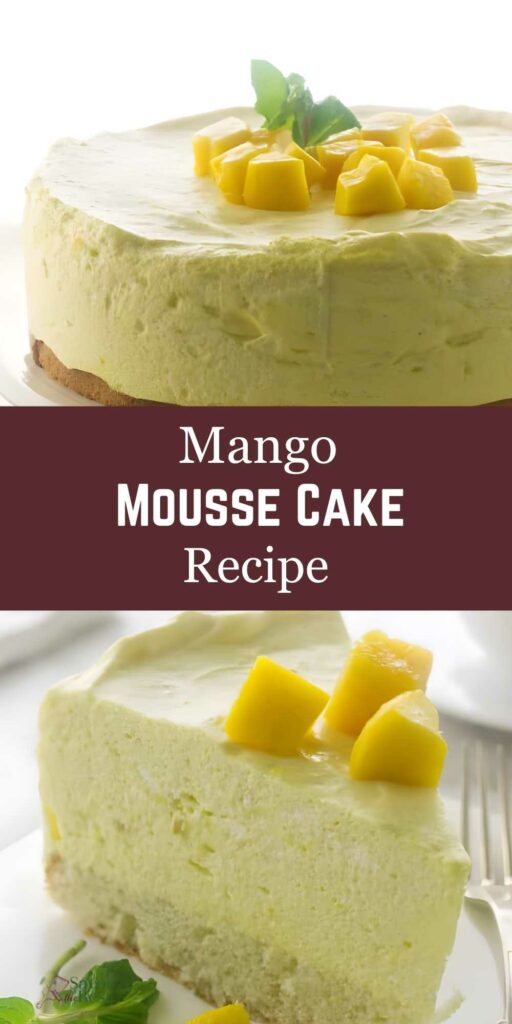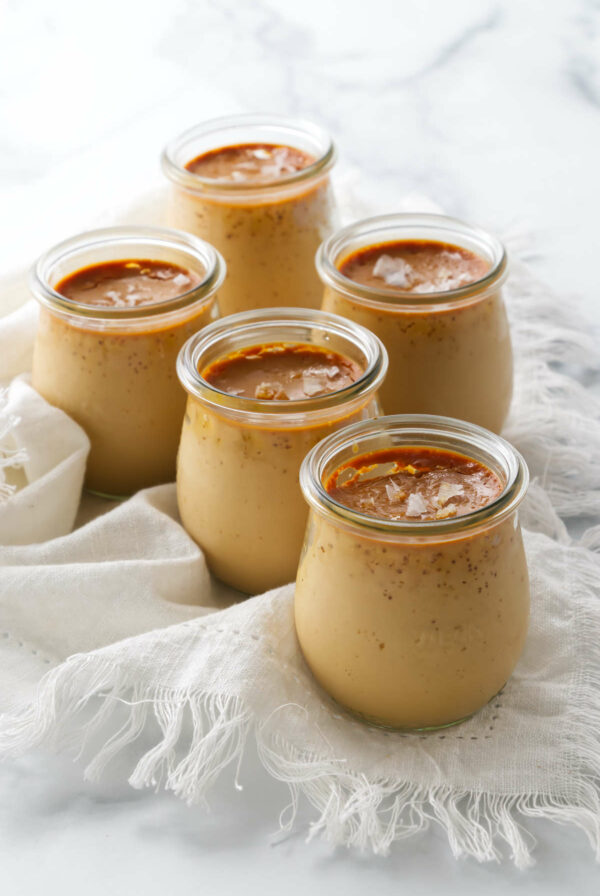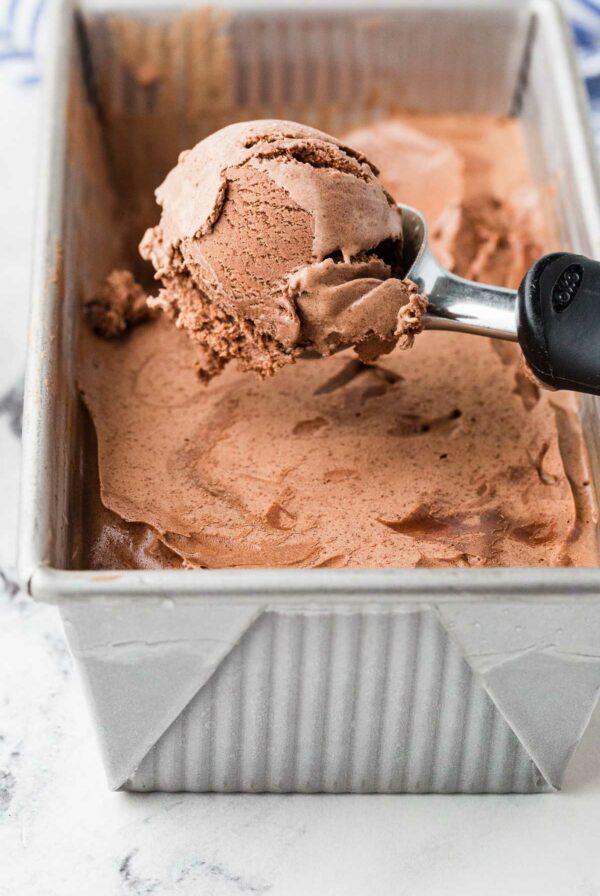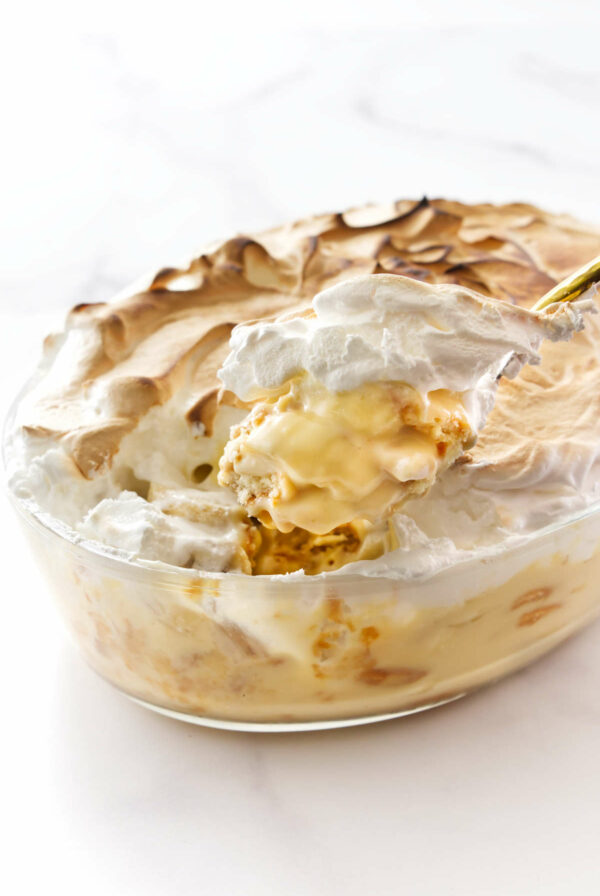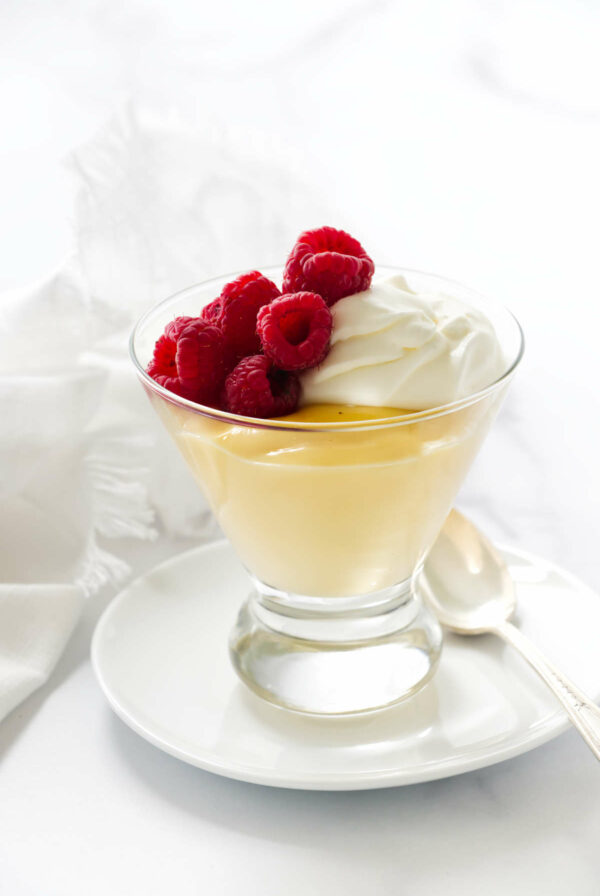This post may contain affiliate links. Please read our disclosure policy. As an Amazon Associate, I earn from qualifying purchases.
This mango mousse cake has a light coconut sponge topped with a thick layer of whipped mango mousse. It’s smooth, creamy, and full of real mango flavor with a soft, airy texture that melts in your mouth.
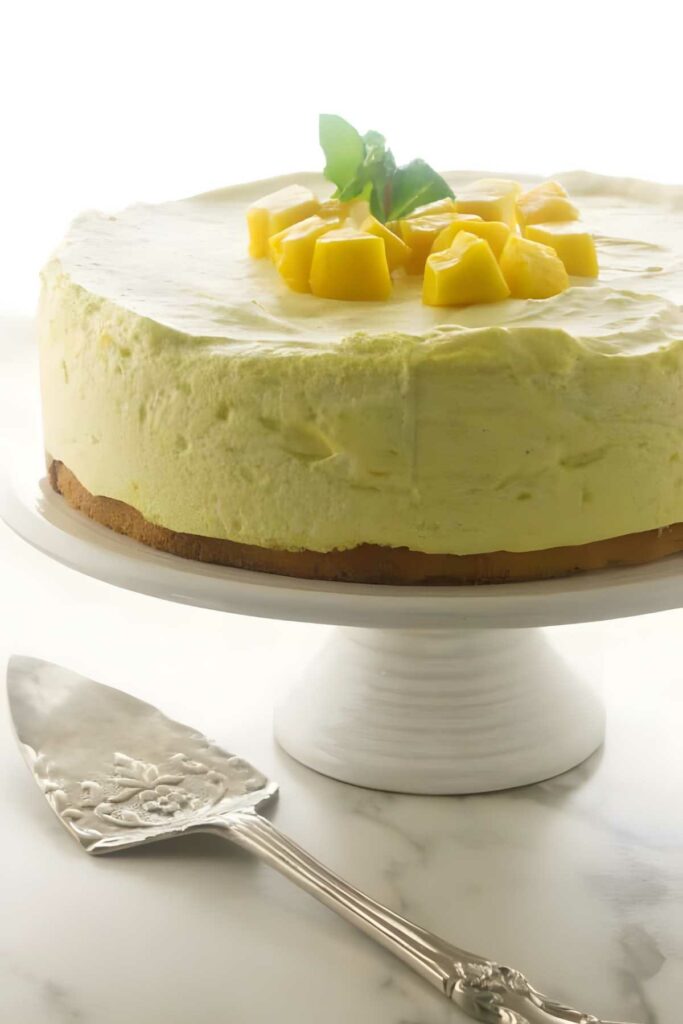
Here’s Why This Mango Mousse Cake Recipe Works
The sponge is built for lightness: warming the eggs helps create a fine, airy crumb that stays soft but sturdy enough to hold the mousse.
The mango flavor stands out: reducing the purée concentrates the flavor, so the mousse tastes like real mango instead of getting lost in sweetness.
The mousse sets beautifully: a little gelatin gives it structure, and whipped cream keeps it light and smooth. It slices cleanly but still melts in your mouth.
It’s make-ahead friendly: chill it overnight, add your garnish the next day, and it’s ready to serve. No last-minute scrambling.
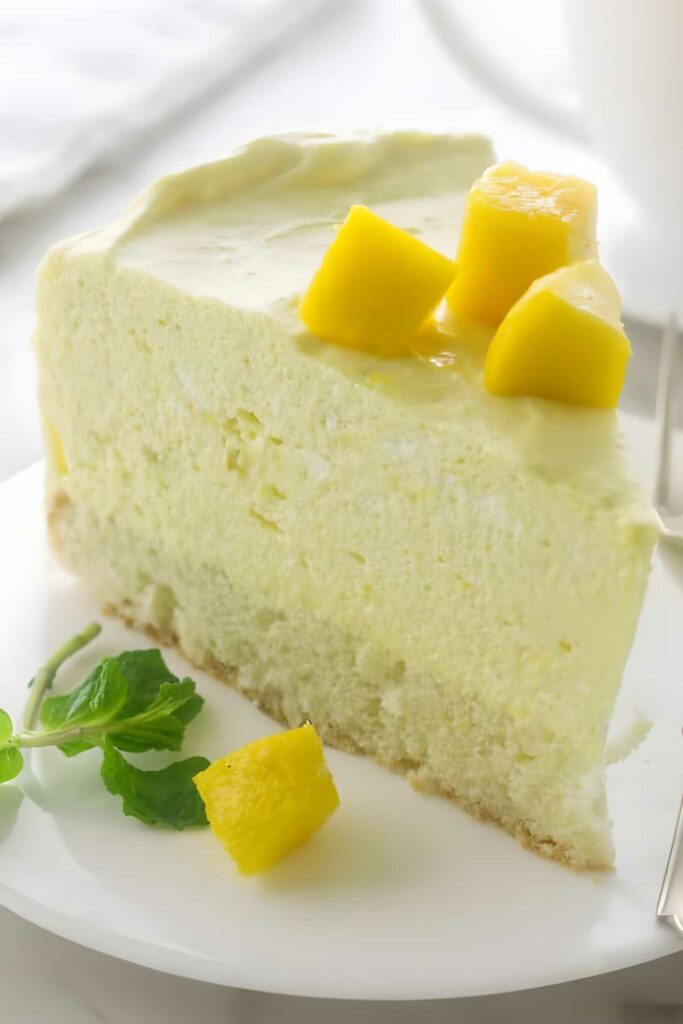
If you like this cake, try my Coconut Mango Panna Cotta for another creamy, tropical dessert that’s simple to make and just as impressive.
Recipe Tips
Warm your eggs: don’t skip this step. It helps the eggs whip to full volume, giving the sponge its light, even texture.
Strain the mango purée: if your mangos are fibrous, press the purée through a fine-mesh sieve for a smooth, silky finish.
Cool the purée quickly: set the bowl in an ice bath and stir until it thickens slightly but isn’t stiff. That’s the perfect temperature for folding into the whipped cream.
Use a parchment collar: it keeps the mousse contained and gives the sides of the cake a tall, clean edge.
Fold gently: when combining the purée and whipped cream, use light motions to keep as much air as possible. That’s what makes the mousse so airy.
Give it time: chill for at least 4 hours, or overnight if you can, to let the mousse fully set and the flavors meld.
For clean slices: run a sharp knife under hot water, wipe it dry, and cut in one smooth motion. Repeat between slices for that perfect edge.
If you love mousse-style desserts, don’t miss my Amaretto Mousse Cake it’s another reader favorite.
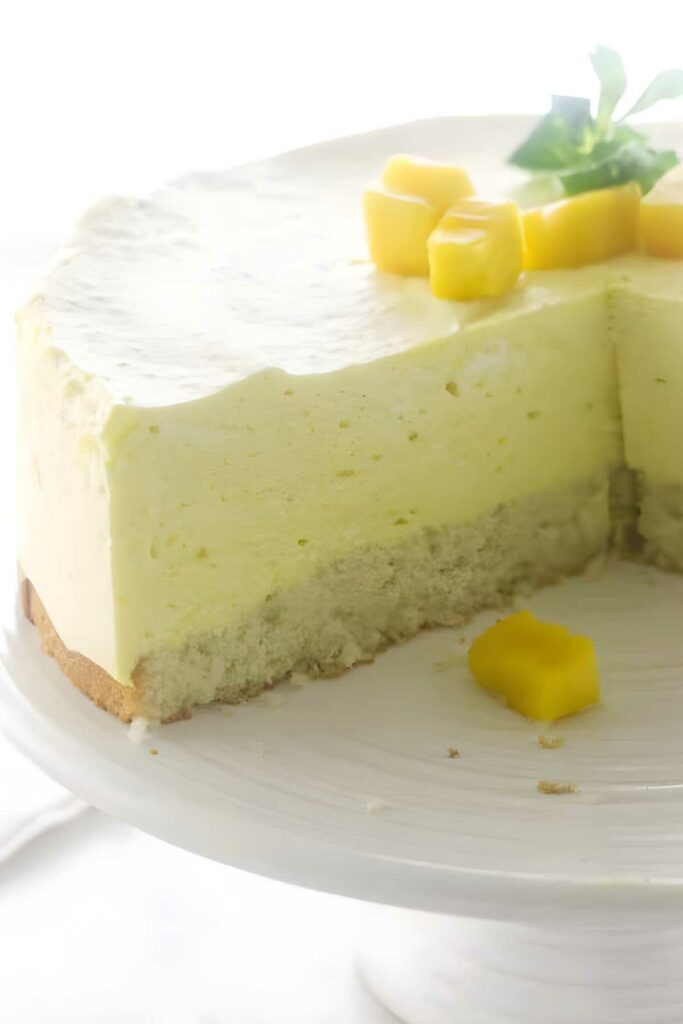
‘For a simpler mango dessert that still delivers big flavor, make a batch of my Mango Dessert Bars.
Questions About This Recipe
Use mangos with soft, creamy flesh and very little fiber. Champagne® (Ataulfo, honey, or Manila mangos) are ideal. They’re sweet, rich, and blend into a smooth purée.
Yes. Thaw completely and drain off any excess liquid before blending. Frozen mango can actually work well since it’s usually picked ripe and has a naturally smooth texture.
Use unflavored powdered gelatin (like Knox brand). It’s easy to measure and works perfectly for stabilizing the mousse.
Sprinkle the gelatin evenly over cold water. Don’t dump it in all at once or it will clump. Let it sit for a few minutes until it absorbs the water and becomes thick and pasty.
Once it’s bloomed, warm it gently until fully liquefied. You can microwave it in short bursts (about 15–20 seconds at a time), stirring between bursts, or melt it over a pan of hot water.
If you’ve got more ripe mangos than you need, turn them into my Mango Sorbet. It’s a great way to use up the rest of your purée.
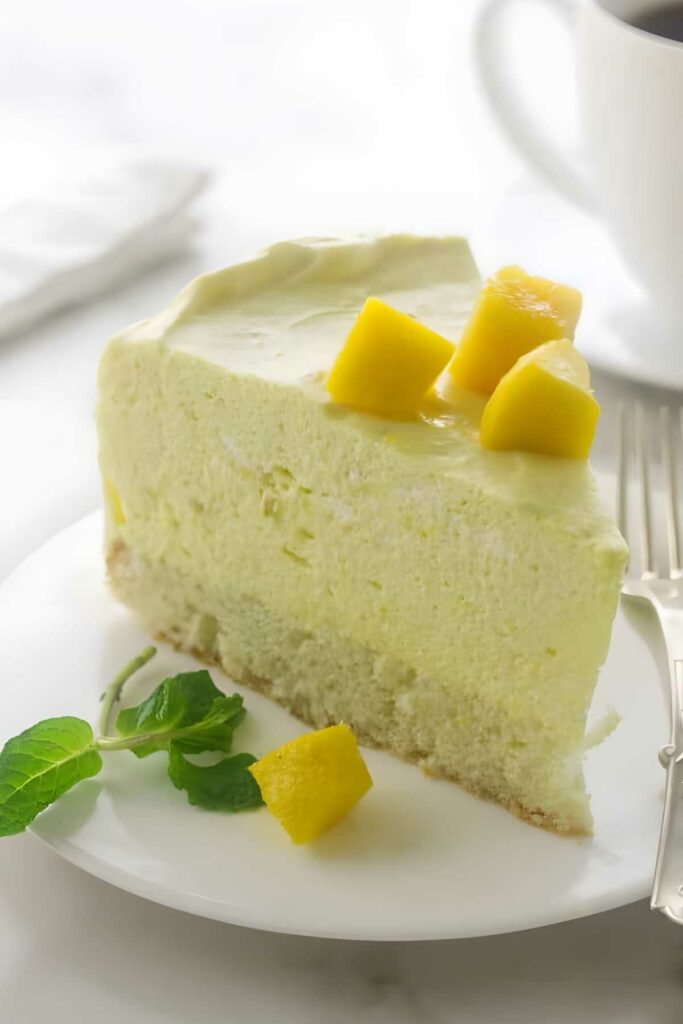
Mango Mousse Coconut Cake
This mango mousse cake is simple but impressive. Soft coconut sponge, creamy mousse, and real mango flavor. It’s the kind of dessert that looks fancy but feels easy once you know the steps. Make it ahead, chill it overnight, and let the fridge do the work.
Pin this now to find it later!
Pin It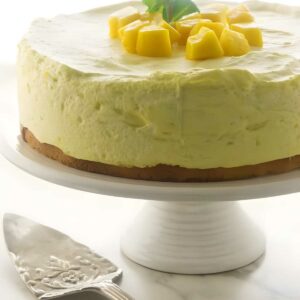
Mango Mousse Cake
If you make this recipe, please leave a star rating and comment.
Ingredients
For the Cake:
- 2 large eggs
- ½ cup granulated sugar, 100 grams
- 1 cups All-Purpose Flour, 120 rams
- 1 teaspoon baking powder
- ½ teaspoon salt
- ¼ cup vegetable oil,
- ½ cup canned coconut milk
- 1 teaspoon vanilla extract
- 1 teaspoon coconut extract
- ⅔ cup sweetened coconut flakes
For the Mango Purée:
- 6 medium mangos , or 3½ pounds
- ½ cup granulated sugar, optional
- ½ cup cold water
- 2 envelopes unflavored gelatin powder, 5 teaspoons (I used Knox)
For the Whip Cream:
- 3 cups heavy cream
- 1 cup powdered sugar
Instructions
For the Cake
- Preheat oven to 350°F. Grease the bottom of a 9-inch springform cake pan and line it with parchment paper. Spray the paper with non-stick spray, set the pan aside.
- Place the eggs (while still in the egg shells) in a bowl of very warm water. The water should feel like very warm bath water. Let them sit in the warm water for about 10-minutes. Warming the eggs up will help them whip with more volume.
- Crack the warmed eggs into a stand mixer (or use a hand held electric mixer), begin beating on high speed with the whisk attachment while gradually adding the remaining sugar. Beat until the eggs and sugar are thick, fluffy, and pale in color. When you lift the beater the egg mixture should fall in a ribbon like pattern. That's how you know the eggs have mixed long enough. It should take 8 to 10 minutes (15 minutes with a hand-held mixer).
- Stop the mixer and sift the flour, baking powder, and salt over the egg mixture, then fold the flour in just to combine. The batter will be thick.
- In a medium size bowl, whisk together the oil, coconut milk, vanilla and coconut extracts, then stir about ½ of the cake batter into the mixture. (See notes) Pour this mixture back into the main cake batter, add the flaked coconut and fold the mixture to combine.
- Pour the batter into the prepared cake pan and bake in the preheated oven for 22 to 25 minutes or until a cake tester or toothpick comes out clean. Place the cake on a wire rack and cool for 5-minutes then remove from the pan and cool completely.
- Cut strips of parchment paper to line the inside edges of the springform pan. The strips should be wide enough to extend ½ to 1-inch above the top of the cake ring. Carefully place the cake inside the pan. (See note #4)
For the Mango Purée:
- In a small shallow dish add ½ cup cold water and sprinkle the gelatin over the top and let it sit to soften.
- Peel and cube the mangos then add them to a food processor or blender and puree them.
- Pour the mango puree into a sauce pan and add the sugar. Simmer for 8 to 10 minutes while constantly stirring. This will reduce the puree and concentrate the flavors.
- Set the dish with the gelatin in the microwave and zap it for 10-15 seconds to liquify it. Pour the liquified gelatin into the mango puree.
- Refrigerate until cool, stirring every few minutes until slightly thickened. (See notes)
For the Whip Cream:
- Place the heavy cream into a mixing bowl and begin whipping. Slowly add the powdered sugar and continue whipping until you have stiff peaks.
- Fold ½ of the whipped cream into the cooled mango puree, then fold in the other half of the whipped cream.
Assembling the cake:
- Get the springform pan that you lined with a parchment collar and place the cake on the bottom. Pour the mango mousse on top of the cake and chill for 4-6 hours, preferably overnight until firm.
- When the cake is firm, remove the outer ring of the spring-form pan and peal off the parchment paper collar. Garnish with cubes of fresh mango and mint sprigs.
Video
Notes
Nutrition
Nutrition information is automatically calculated, so should only be used as an approximation.
 Like this recipe? Rate & comment below!
Like this recipe? Rate & comment below!
